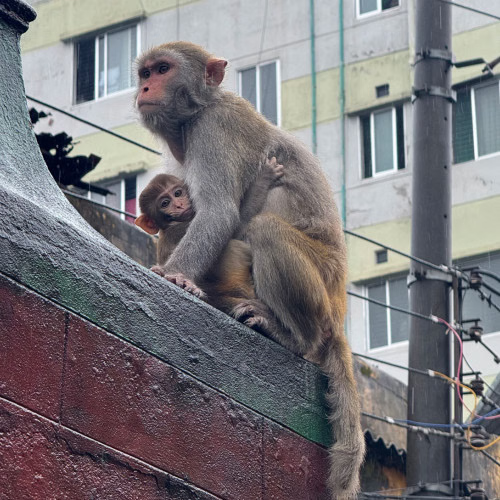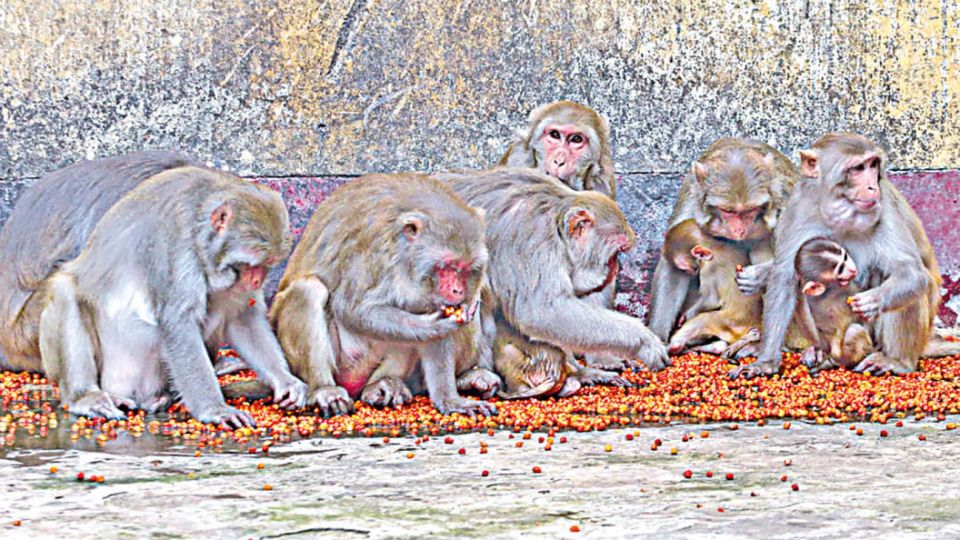September 24, 2025
DHAKA – In Gandaria, one of the oldest neighbourhoods in Puran Dhaka, two unlikely legacies are fading together: a century-old herbal medicine company and the monkeys that once thrived in these streets. For generations, Sadhana Aushadhalaya was both a medicine factory and a sanctuary. Established in 1914 by the chemist and nationalist Jogesh Chandra Ghosh, it symbolised rebellion, resilience and compassion. Along with it, the monkeys became part of the area’s residents, swinging from trees, scavenging for food and wandering into the courtyards.
Jogesh Chandra Ghosh, a Fellow of the Royal Society of Chemistry and a member of the American Chemical Society, sought to popularise the use of affordable herbal medicine amongst the poorer population, which led to the creation of Shadhana Aushadhalaya after the Swadeshi movement. His efforts advanced the practice of Ayurvedic medicine and modernised the process of medicine production. What started in Dhaka later expanded to Kolkata and other parts of India. They even began exporting products to Africa and China.
The character of Sadhana was defined not merely by commerce, but also by acts of profound courage. During the 1964 riots, Ghosh sheltered Hindus from the neighbourhood in the factory of Sadhana Aushadhalaya. Seven years later, during the 1971 Bangladesh Liberation War, Jogesh Chandra Ghosh was tragically killed by the Pakistani junta for sheltering freedom fighters, and most of the company’s assets were looted. This severely hampered Sadhana’s operations and triggered its gradual decline. After the war, his son, Dr Naresh Chandra Ghosh, continued the company’s legacy of providing natural remedies.
It was in this environment of compassion that the monkeys found their anchor. As the British rulers developed Gandaria into a residential hub in the early 20th century, the trees planted by Sadhana provided the perfect habitat. In a characteristically generous act, the medicine enterprise welcomed these monkeys and even dedicated a room in the factory to feed them. The monkeys became an ever-present part of the community, a symbol of Sadhana’s symbiotic relationship with its environment. Even a century later, Sadhana still maintains this practice, albeit on a much narrower scale.
Chitta Ranjan Dash, a doctor who has been working at Sadhana Aushadhalaya for the past 16 years, spoke to The Daily Star about the decline of Sadhana. “Of the 72 sales centres that once operated in Bangladesh, only 65 remain active today. The range of medicines has also shrunk—from about 450 types to just 120 currently in production.”

At Sadhana Aushadhalaya in Old Dhaka, a mother monkey carries her baby while high-voltage wires loom dangerously overhead. Many monkeys have fallen victim to electrocution in this hazardous setting. PHOTO: THE DAILY STAR
The decline of Sadhana has had a direct and tragic impact on the monkeys. The lush trees that once provided food and shelter for them have been felled by rapid urbanisation. The factory’s dwindling capacity means less food to spare for the monkeys. Somit Dash, a guard at Sadhana Aushadhalaya who has worked there since 2009, explains how declining medicine production has also led to a reduction in the number of monkeys: “There was a time when we needed 20–30 different types of trees for one drug, but now only five or six of these trees remain.”
Their population has now dwindled to a meagre 100 to 125, according to local estimates. Chitta Ranjan Dash laments the matter: “The number of monkeys has declined sharply in recent years, with no signs of recovery. We frequently hear of their deaths—caused by electrocution, disease, or falls from rooftops. Our labourers collect the dead bodies, and at times the municipal authorities have taken them away.”
Somit Dash says, “The monkeys around here are not in Sadhana’s care. What we provide for the monkeys is voluntary work.”
Asim Mallik, a wildlife inspector from the Forestry Department of Bangladesh, told The Daily Star that most of their work involves rescue missions and treating injured animals. “We have worked on monkeys in that area before. After rescuing an injured monkey, we took it to Mirpur Animal Hospital for treatment and later released it in the wild. And in the case of dead animals, we take a sample from them and then bury them,” he explained.
A local resident explained that with food sources dwindling, clashes between people and monkeys have become more frequent. The animals now steal food and even clothes from houses, and many windows in the area have been reinforced with steel bars to keep them out. Since Covid, residents have also reduced feeding, leaving the monkeys even more vulnerable.
According to Sohag Mohajon, president of the Dhaka Youth Club International, his organisation tries to feed the monkeys at least once a year, usually in winter when survival is hardest, as a gesture to ensure they are not forgotten. In 2021, the group submitted a memorandum to Dhaka City Corporation requesting food support, but the official feeding programme, he noted, appears to have been inactive for the past two years.
Sadhana Aushadhalaya itself is now overseen from afar by Nila Ghosh, the founder’s granddaughter, who lives in Kolkata and visits only briefly. Also, the export business has ceased, not for lack of demand, but because the transportation process has become too costly and time-consuming.
The story of Sadhana’s monkeys is not merely about a dwindling troop of animals, but about memory, compassion, and survival. For over a century they have lived alongside a factory that symbolised both scientific pursuit and human kindness. Their decline is a reminder of what happens when we neglect the fragile balance between people and nature. If they vanish, it will not only mark the end of a community of monkeys but also the loss of a living fragment of Dhaka’s heritage.


